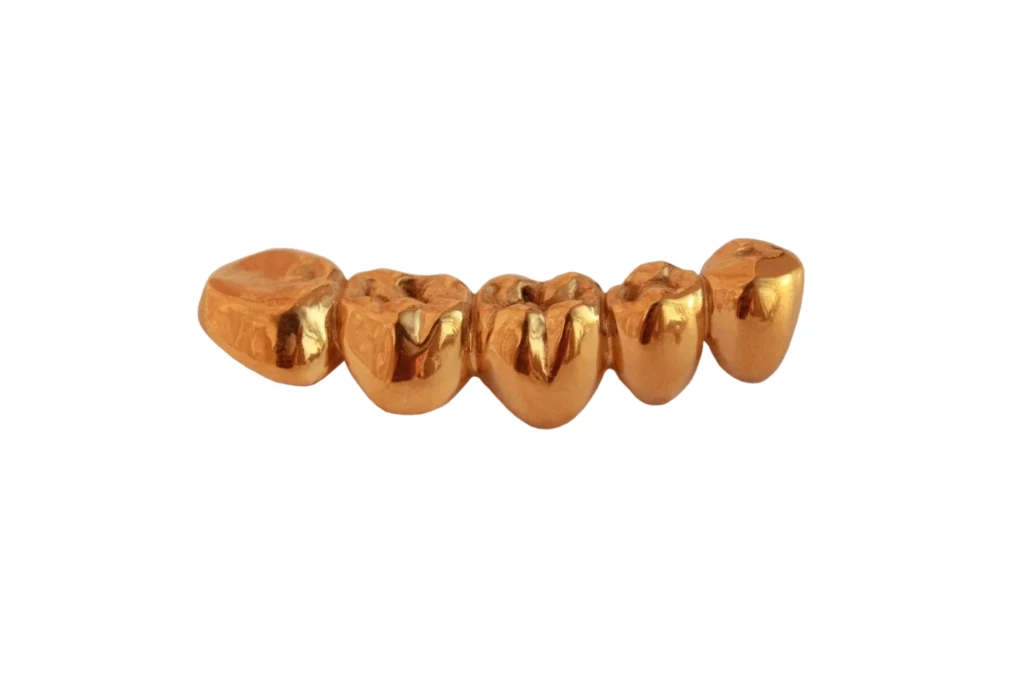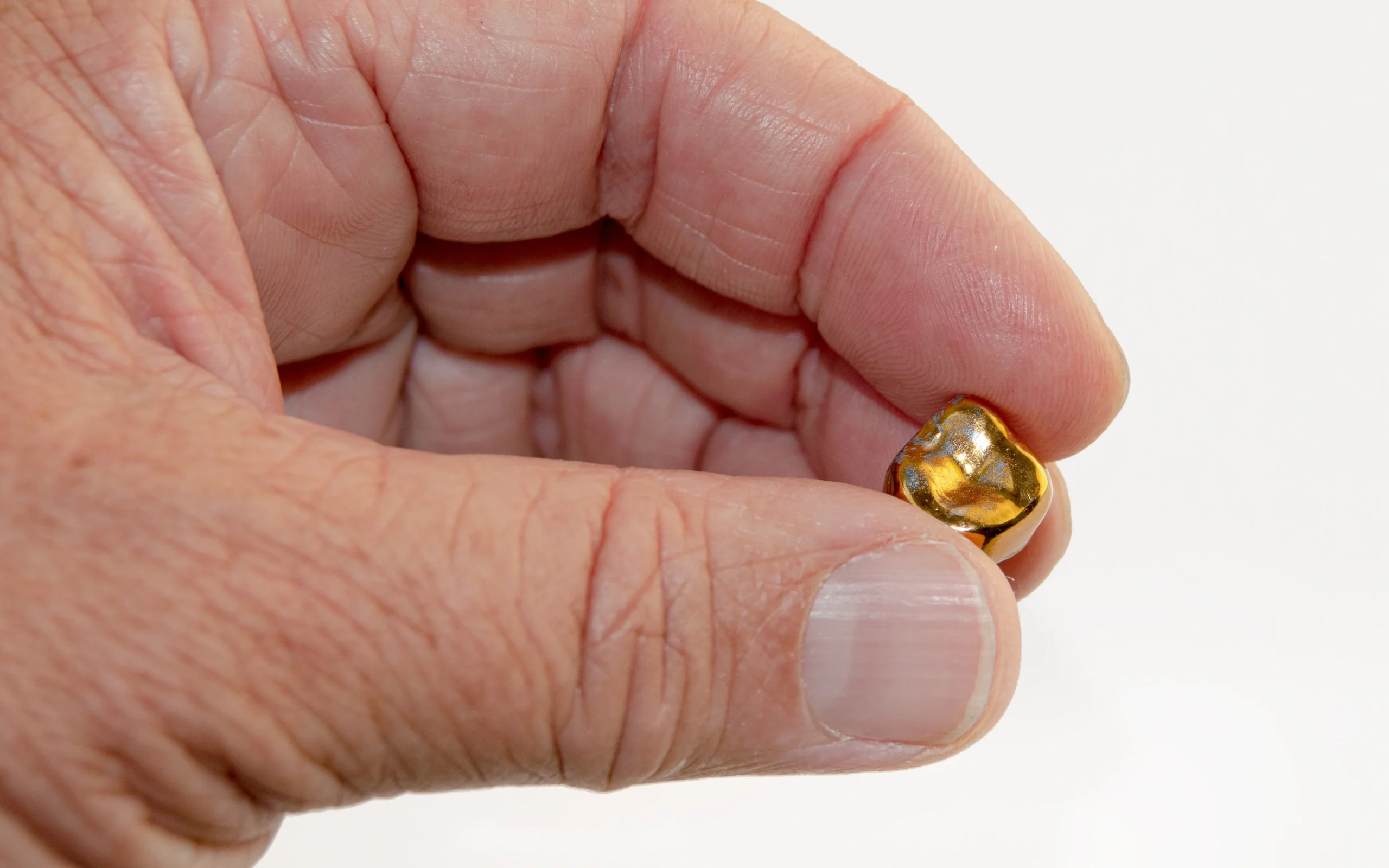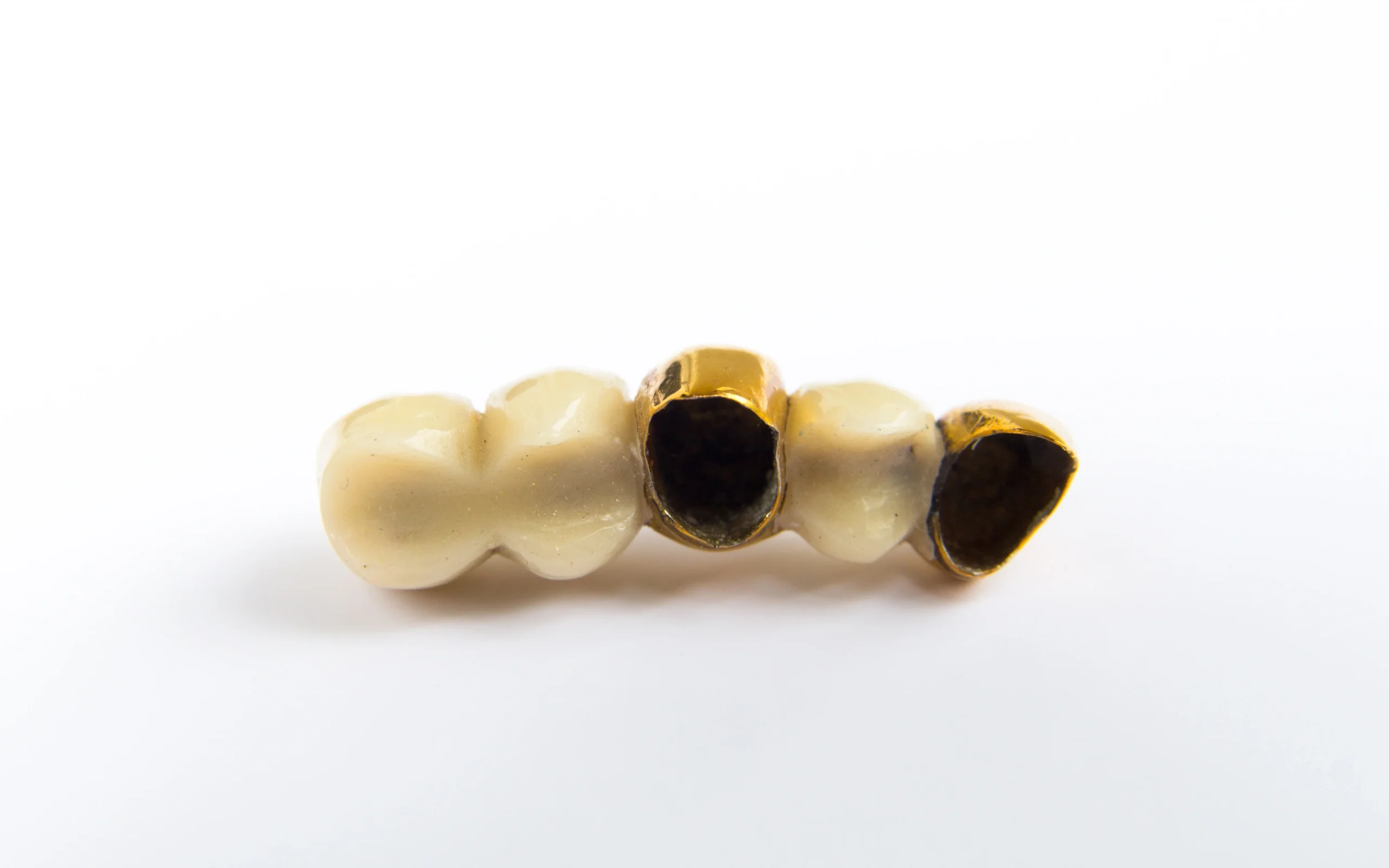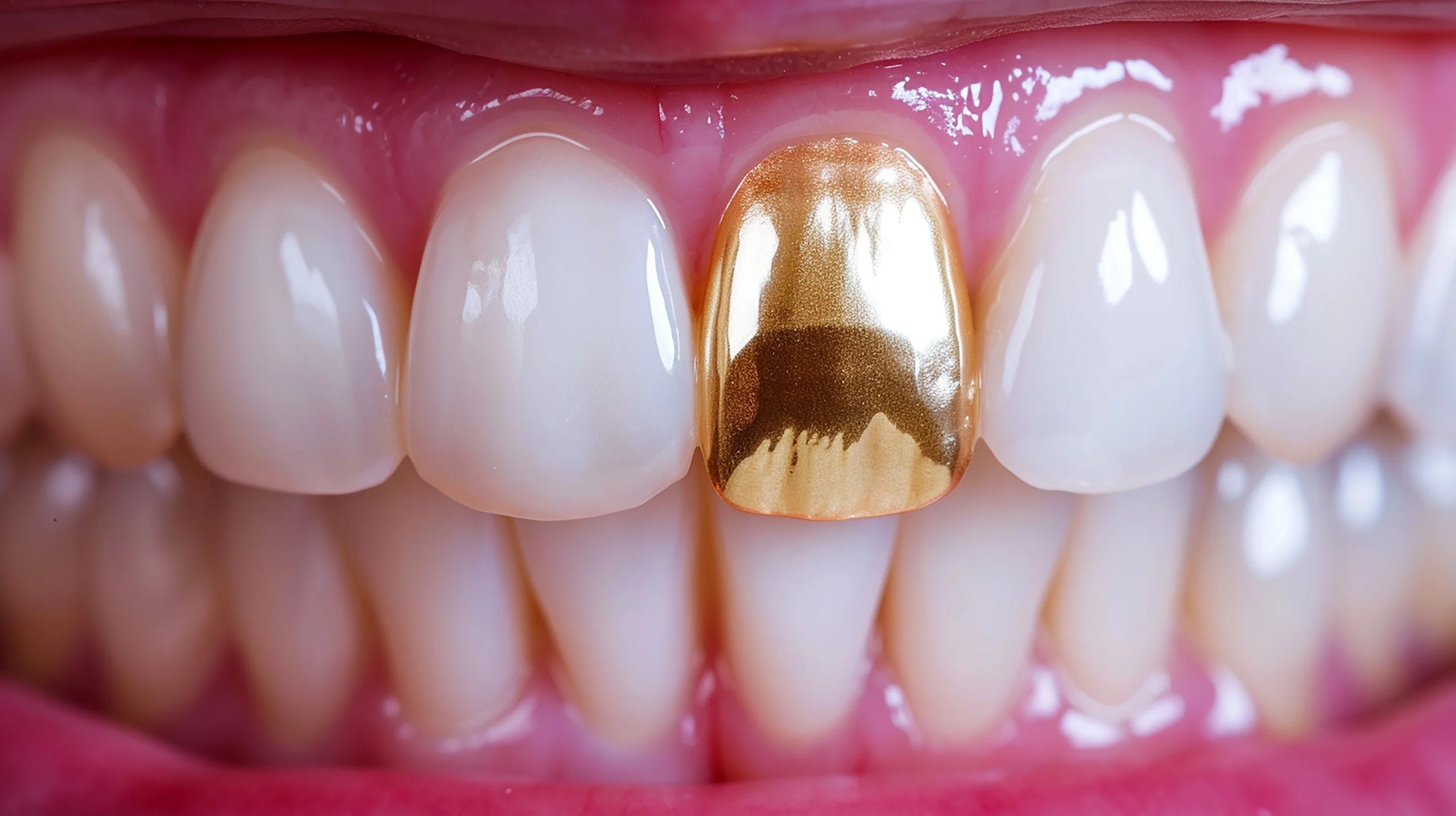Did you know that gold has been used to help repair teeth for more than 4,000 years? The shiny yellow metal has a unique set of traits that are ideal for dental use: durability, biocompatibility and malleability. From crowns and bridges to inlays and onlays, gold has been prized as a reliable dental metal for centuries. But with a variety of new dental materials available (such as porcelain, ceramic and resin), it’s easy to wonder if gold teeth are a thing of the past.
What Are Gold Teeth?
Gold crowns are a type of dental restoration in which a tooth or multiple teeth are capped or covered with a layer of gold. Crowns are often used to protect teeth that have become weak or cracked from decay, a root canal, or a large filling. Sometimes gold crowns are also used to help hold dental bridges or partial dentures in place.
Aside from clinical use in dentistry, some gold teeth are purely aesthetic. Gold teeth have carried cultural significance throughout different places and time periods, often seen as a symbol of wealth, status and fashion. Picture your favorite 2000s hip-hop music videos, for example. And in some African and Caribbean communities, gold teeth are worn as a form of adornment for special occasions or ceremonies.

Dental Gold Alloys
Gold teeth are not made of pure gold, because pure gold is quite soft on its own. Dental gold is alloyed (aka combined) with other metals such as platinum, palladium, silver, copper, nickel and chromium to increase strength and reduce costs.
Different types of gold teeth are categorized by the percentage of noble metals that they contain. “Noble metals” refer to a group of metals characterized by their resistance to corrosion and relative inertness. Such metals include gold, silver, platinum, palladium, rhodium, iridium, and osmium. These elements are perfect for dental use because they’re exceptionally resistant to oxidation in moist environments like the human mouth.
In terms of metal dental crowns, there are three main types: high noble alloys, noble alloys and non-noble alloys:
- High noble: made from a minimum of 60% precious metals, with gold being the predominant component
- Noble: contain at least 25% precious metals
- Non-noble: contain less than 25% precious metals
Gold in Dentistry
A gold alloy is the ideal metal for dental work. It’s soft and malleable enough to be shaped precisely around a tooth, yet strong enough to withstand daily chewing and grinding. Gold can hold its shape even when cast extremely thin, so dentists don’t need to shave too much of the real tooth down when preparing to fit a crown overtop.
In terms of biocompatibility, gold alloys are unmatched both by all other materials, both metal and non-metal. Gold withstands rusting in moist environments and can maintain good condition inside the human mouth for decades!
Despite gold’s impressive qualities, patients receiving dental restorations may prefer alternative materials for aesthetic reasons. Porcelain and ceramic crowns, for example, match the color of the surrounding teeth very closely, providing a more natural appearance. However, gold alloys are still preferred in clinical cases where strength, durability and biocompatibility are paramount. Because of this, gold will likely remain a vital element in dentistry for years to come.

How Much is Your Gold Tooth Worth?
For one reason or another, you may end up with extracted dental gold on your hands one day. Maybe you or a loved will have a gold crown replaced in pursuit of more natural-looking teeth, or for various medical reasons.
If you have dental gold that you’re looking to sell, bear in mind that the value of your material can vary greatly. It all depends on how much precious metal your dental scrap actually contains – is it a high noble alloy, noble or non-noble? Some metal crowns are made entirely of “base metals,” containing no gold or precious metal at all!
Because gold crowns vary so much in composition, it’s impossible to determine the exact amount of gold present in the alloy without refining the metals – but they generally range in value from $0-$100. That said, with today’s record-high gold prices ($2,901 per ounce as of Feb 26th, 2025), even just a few pieces of gold-containing scrap may be worth a pretty penny!
How to Sell Gold Crowns
Selling a gold crown to a precious metals refiner like Garfield Refining will guarantee you the highest payment for your material. We will perform a melt and assay to determine the exact amount of gold in your scrap, and your payout value will be calculated using the current market price of gold.

And don’t forget – your dental scrap may contain more than just gold! Dental alloys often contains other precious metals like silver, platinum and palladium, which are also valuable. A trusted dental refiner like Garfield will make sure that you’re paid for every bit of precious metal in your scrap.
Any refinery that you sell dental scrap to will charge a refining fee to cover the cost of extracting the precious metals. At Garfield, we pride ourselves on charging the lowest refining fees in the industry. Low fees paired with our expert refining techniques allow us to provide our clients with the highest possible payouts. That’s why we’ve been voted “Best Dental Refiner” by Dentaltown Magazine for 14 years straight!
Garfield accepts all forms of dental scrap as-is, including dental crowns, bridges, PFMs, inlays, onlays, partial dentures and dental implants.
Stay tuned to our blog for more helpful insights on precious metals! Check out other fun articles like ‘The Major Factors That Drive the Gold Price’ and ‘Where Do Gold Nuggets Come From?‘
If you’re looking to sell gold dental scrap, we’ve got you covered. Start your free shipment today!
Garfield has specialized in refining precious metals since 1892. Though we serve various industries, we excel in dental refining. For the past fourteen years, Garfield has been named North America’s “Best Dental Refiner” by leading dentists!

